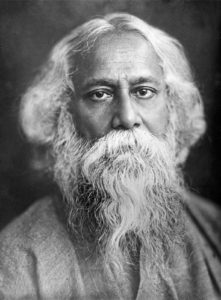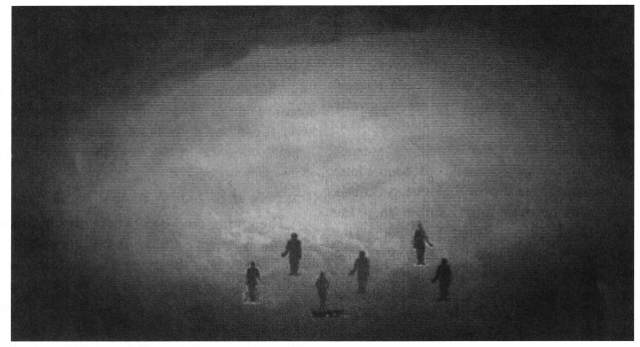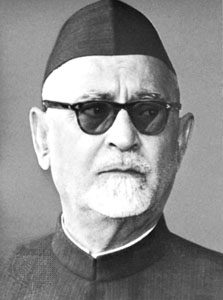We have decided to create the most comprehensive English Summary that will help students with learning and understanding.
The Story of Cricket Summary in English by Ramachandra Guha
The Story of Cricket Summary in English
Part I
Cricket is a very popular game today. It entertains and attracts the young and the old alike. It has left hockey, football and tennis far behind. This lesson traces the history of this sport.
Cricket grew out of the stick-and-ball games played in England 500 years ago. It is played with a bat which means stick or club. Till the 18th century bats were shaped like hockey sticks. The reason was that the ball was bowled along the ground.
The strange feature of cricket is that a test match can go on for five days, and still remain undecided. A football match is over in an hour-and-a-half.
Another notable thing of cricket is its pitch. It has to be 22 yards in length, but there is no limit on the dimension of the playing ground as in hockey or football.
Cricket grounds differ greatly in size. Laws of cricket were first drawn up in 1744. It has two umpires. The stumps are 22 inches high, and the ball across them is six inches.
The world’s first cricket club was organised in 1760. The bat was made straight. In 1774, the first leg-before law was published. Even today both the bat and ball are hand made. Once the bat was cut out of a single piece of wood. Now it consists of two pieces, made out of the willow wood. Plastic, fibreglass and metal are not used at all.
The pads were introduced in 1848, followed by gloves. The modern game is not imagined without helmets, made of light weight materials.
Part II
Indian cricket had its origin in Bombay. The Parsis were the first to adopt it. They founded the first Indian Cricket Club in 1848. It was funded by the Tatas and the Wadias. Initially they had some problem about the use of park or field.
Modern cricket is dominated by Test and One day internationals. C.K. Nayudu was an outstanding batsman of his times. He played for India in its first Test matches against England in 1932. India entered the world of Test Cricket in 1932, 15 years before it became an independent nation.
Part III
Television coverage changed cricket. It took the game to towns and villages. Children got the opportunity to watch International Cricket and learn how to play well. Cricket has got a global market. India has got the largest number of viewers for the game. Indian players are the best-paid and most famous in the game. They are paid professional. One day game has overshadowed Test Cricket.
The Story of Cricket Summary in Hindi
Part I
क्रिकेट आज बहुत लोकप्रिय खेल बन गया है। यह युवा और वृद्ध सभी को समान रुप से आकर्षित तथा आनन्दित करता है। इसने तो हॉकी, फुटबाल तथा टेनिस आदि को बहुत पीछे छोड़ दिया है। यह पाठ हमें इस खेल के इतिहास की जानकारी देता है।
क्रिकेट का जन्म इंग्लैण्ड में 500 वर्ष पूर्व खेले जाने वाले डंडा गेंद से हुआ था। इसे एक बैट अर्थात् डंडे या मुग्दर जैसी वस्तु से खेला जाता है। 18वीं शताब्दी तक बैट का आकार हॉकी स्टिक की भाँति मुड़ा हुआ होता था। कारण यह था कि गेंद को जमीन पर ही फेंका जाता था।
क्रिकेट की एक विशेषता यह है कि टेस्ट मैच पाँच दिनों तक चलते रहने के पश्चात भी अनिर्णायक रह सकता है। फुटबाल मैच तो डेढ़ घंटे में समाप्त हो जाता है।
क्रिकेट का दूसरा विचित्र गुण है इसका पिच। इसकी लम्बाई 22 गज होनी आवश्यक है पर हॉकी या फुटबाल की तरह खेल के मैदान के आकार पर कोई पाबन्दी नहीं होती।
क्रिकेट के मैदान आकार में बहुत भिन्न होते हैं। क्रिकेट संबधी नियम 1744 में पहली बार बने। इसके दो अंपायर या निर्णायक होते हैं। स्टम्पस 22 इंच ऊँचे होते हैं और गेंद 6 इंच व्यास की होती है।
विश्व में सर्वप्रथम क्रिकेट क्लब की स्थापना 1760 के दशक में हुई। बैट सीधा सपाट होता था। 1774 में पहली बार विकेट के सामने टाँग की अड़चन आने का नियम छपा। एक समय बल्ला लकड़ी के एक ही टुकड़े से बना होता था। अब इसमें दो भाग होते हैं, जिन्हें विलो की लकड़ी से बनाया जाता है। प्लास्टिक, फाइबर शीशे अथवा धातु का इस्तेमाल नहीं किया जाता।
टाँगों के बचाव के लिये पैड का इस्तेमाल 1848 में हुआ, इसके पश्चात दस्ताने भी पहने जाने लगे। आधुनिक खेल हल्के वजन वाले हेलमेट के बिना खेले जाने की कल्पना भी नहीं की जा सकती।
Part II
भारतीय क्रिकेट का जन्म बम्बई में हुआ था। सर्वप्रथम पारसी लोगों ने इसे अपनाया। उन्होंने पहला भारतीय क्रिकेट क्लब 1848 में बनाया। इसके लिये धन देने वाले टाटा तथा वाडिया व्यवसायी थे। प्रारम्भ में उन्हें एक पार्क अथवा क्रीड़ा स्थल को लेकर परेशानी हुई।
आजकल क्रिकेट में टेस्ट तथा एक दिवसीय मैचों का बोल-बाला है। अपने समय में सी के नायडू प्रसिद्ध खिलाड़ी थे। उन्होंने 1932 में पहला मैच भारत-इंग्लैण्ड के बीच होने वाला खेला था। भारत तो क्रिकेट जगत में आजादी के 15 वर्ष पूर्व 1932 में ही प्रवेश कर गया था।
Part III
टेलीविजन प्रसारण ने क्रिकेट में बहुत बदलाव ला दिया। इसने क्रिकेट को दूर-दूर के कस्बों तथा गाँवों में पहुँचा दिया। बच्चों को अंतर्राष्ट्रीय स्तर के क्रिकेट मैच देखने तथा उनसे सीखने का अवसर मिल गया। क्रिकेट की आज विश्व भर में माँग है। इस खेल के सबसे अधिक दर्शक भारत में हैं। भारतीय खिलाड़ियों को सर्वाधिक पैसा मिलता है और वे विश्वविख्यात भी हैं। वे पैसों के लिये खेलते हैं। एक दिवसीय क्रिकेट ने टेस्ट क्रिकेट मैचों से अधिक लोकप्रियता पाई है।






